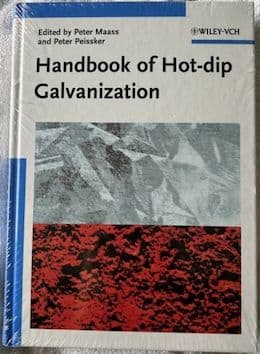
-----
High EMF problem from electric galvanizing kettle
We currently installed an inductance (electrical) type galvanizing kettle. (Formerly we had gas burners). The tech. came from France and Belgium. To support the kettle with its loadings, we used steel framing. Problem we are having due to High EMF VS steel is arcing of steel members and heating of our steel decking. We have been informed to now use concrete to support the kettle. I would like to know if we can bypass or shield the EMF. Our kettle is 42' x 4.5 'x 8' high. The inductors around the kettle are in three stages.
Please anyone with their comments.
Robert Nikischer- Candiac, Quebec, Canada
The inductors around your kettle are radiating a varying magnetic field. This will induce voltages and currents into any metallic structure that is in the field. The more massive the adjacent metallic structure the larger the eddy currents and the larger the power drain. The eddy current losses can be minimized by having adjacent steel structures constructed of laminations. This is the technique used in the core of transformers to control this problem but it is probably not pracitical in your application.
Can you screen the fields? The answer is most certainly yes, but do you want to? Any screening will absorb power from your inductors and will heat up or will be very expensive. Mounting the kettle in any non conductive structure and moving all large metallic objects as far away as possible will cure your problem. Mounting in concrete raises some issues. The concrete itself, once dry, will be fine but it is customary to use rebar to strengthen the structure. The rebar will act as a secondary in a transformer and large recirculating currents may be induced which in turn will cause heating. Heating damp concrete from the inside can cause the water to turn to steam. This could cause the concrete to fail explosively and by explosively I mean like a small bomb. Careful design of the rebar structure can reduce this risk. I would talk to an expert in the field. Hope this helps a little.
John Holroyd- Elkhorn, Wisconsin
Q, A, or Comment on THIS thread -or- Start a NEW Thread

